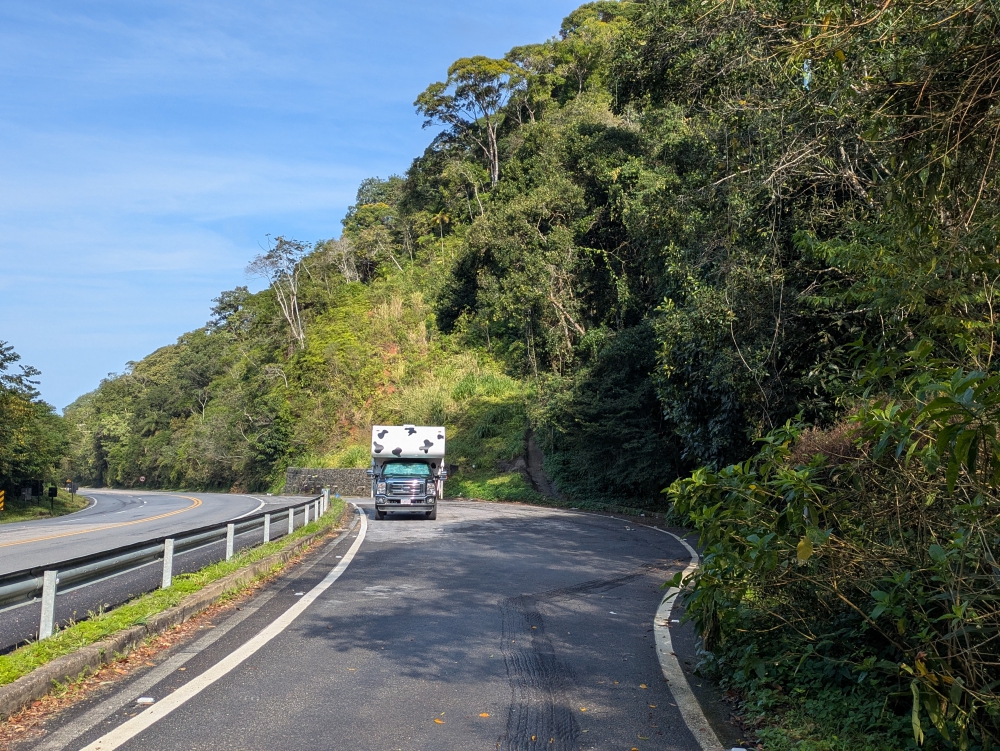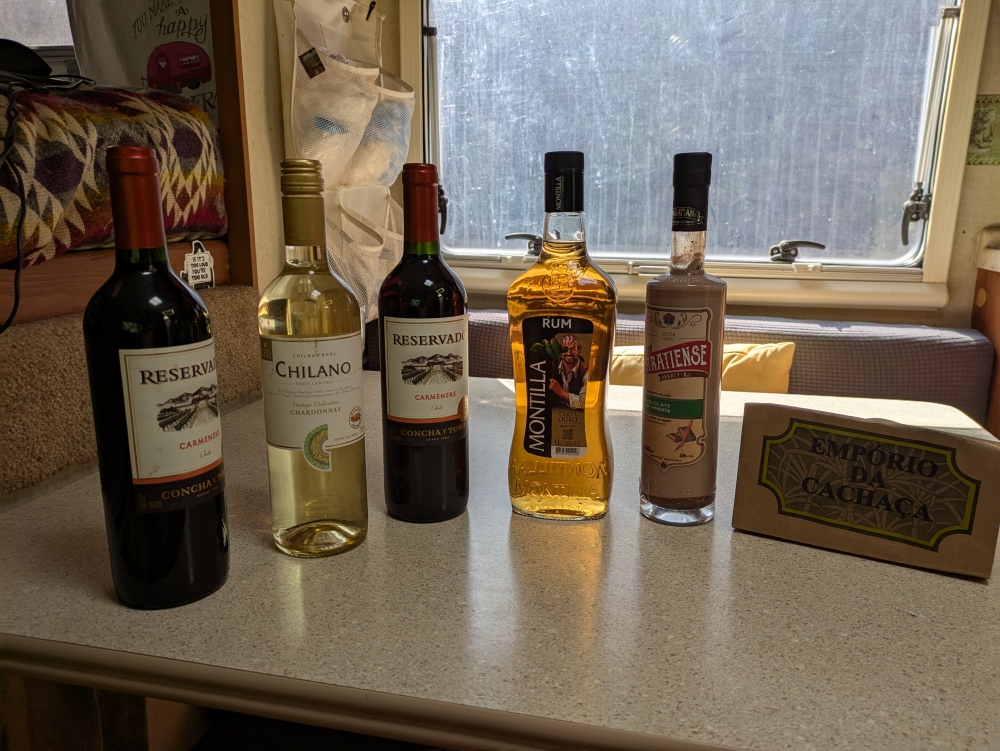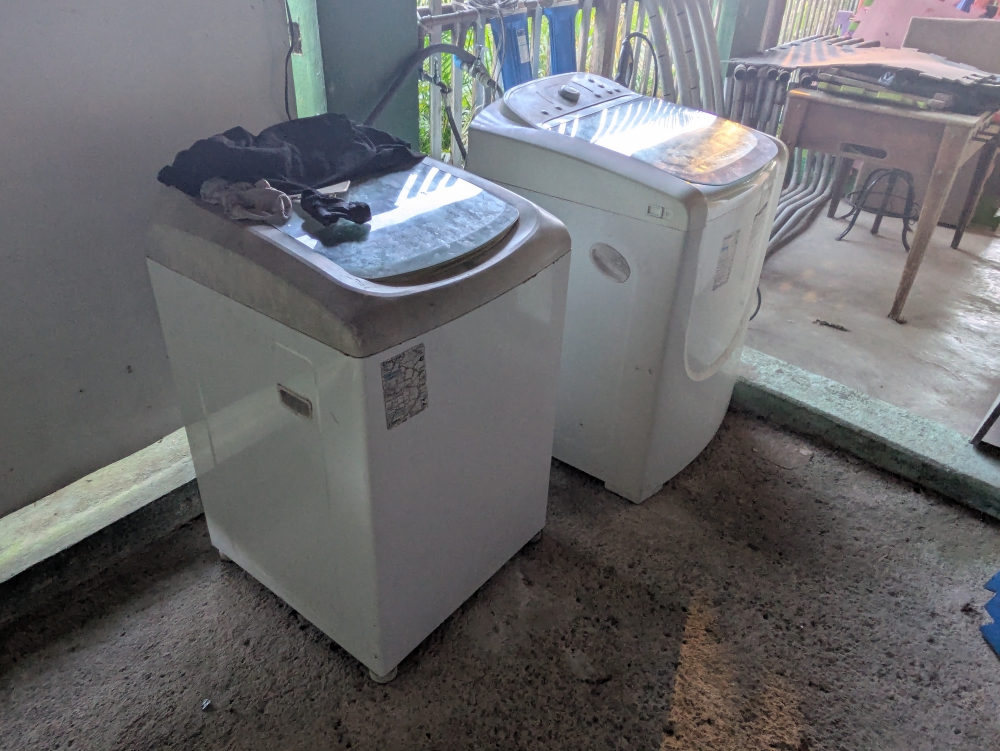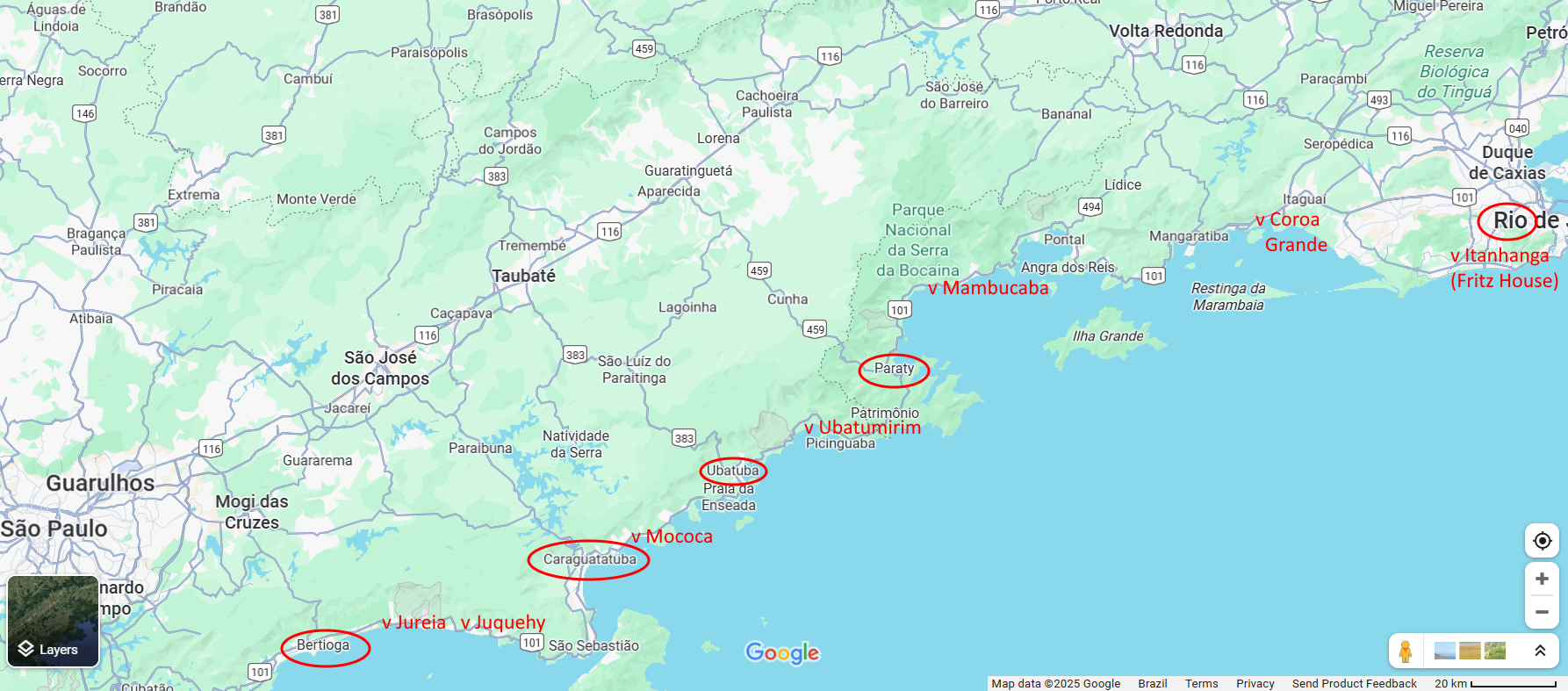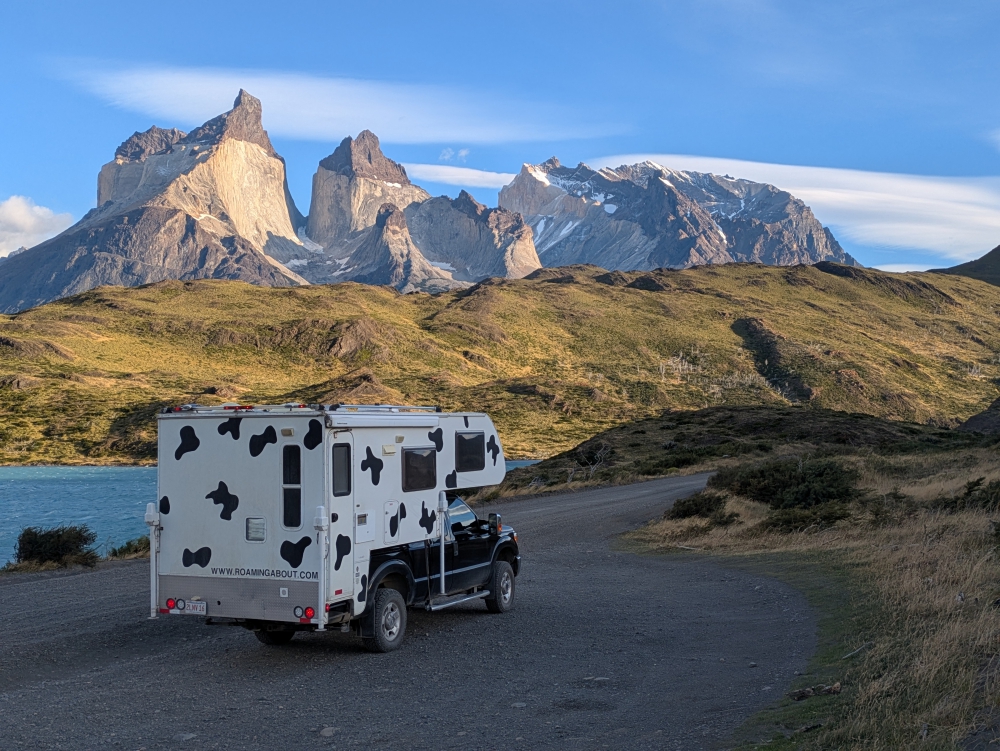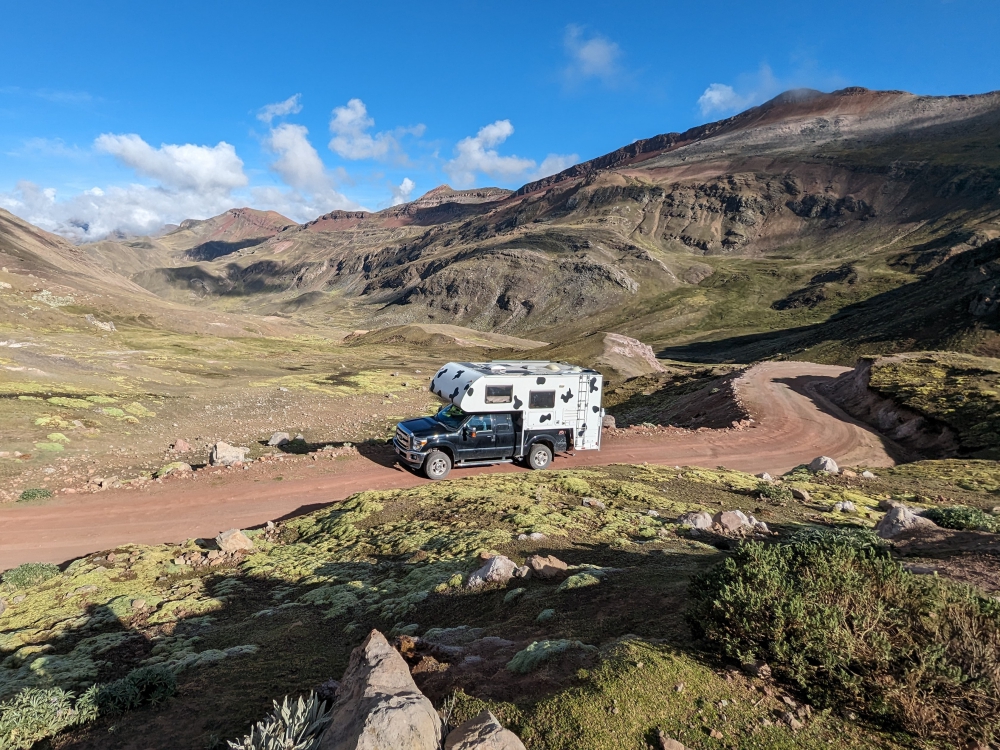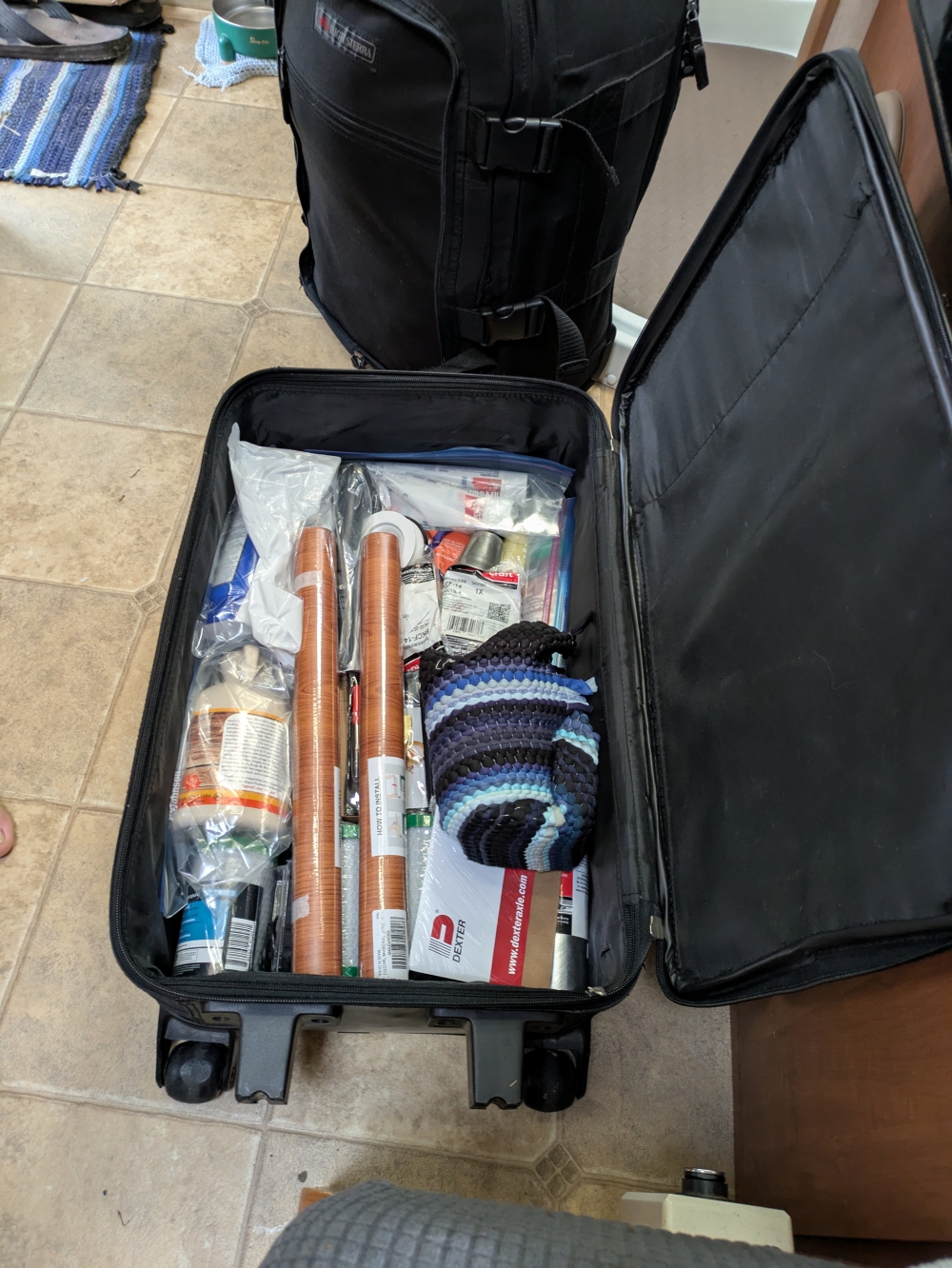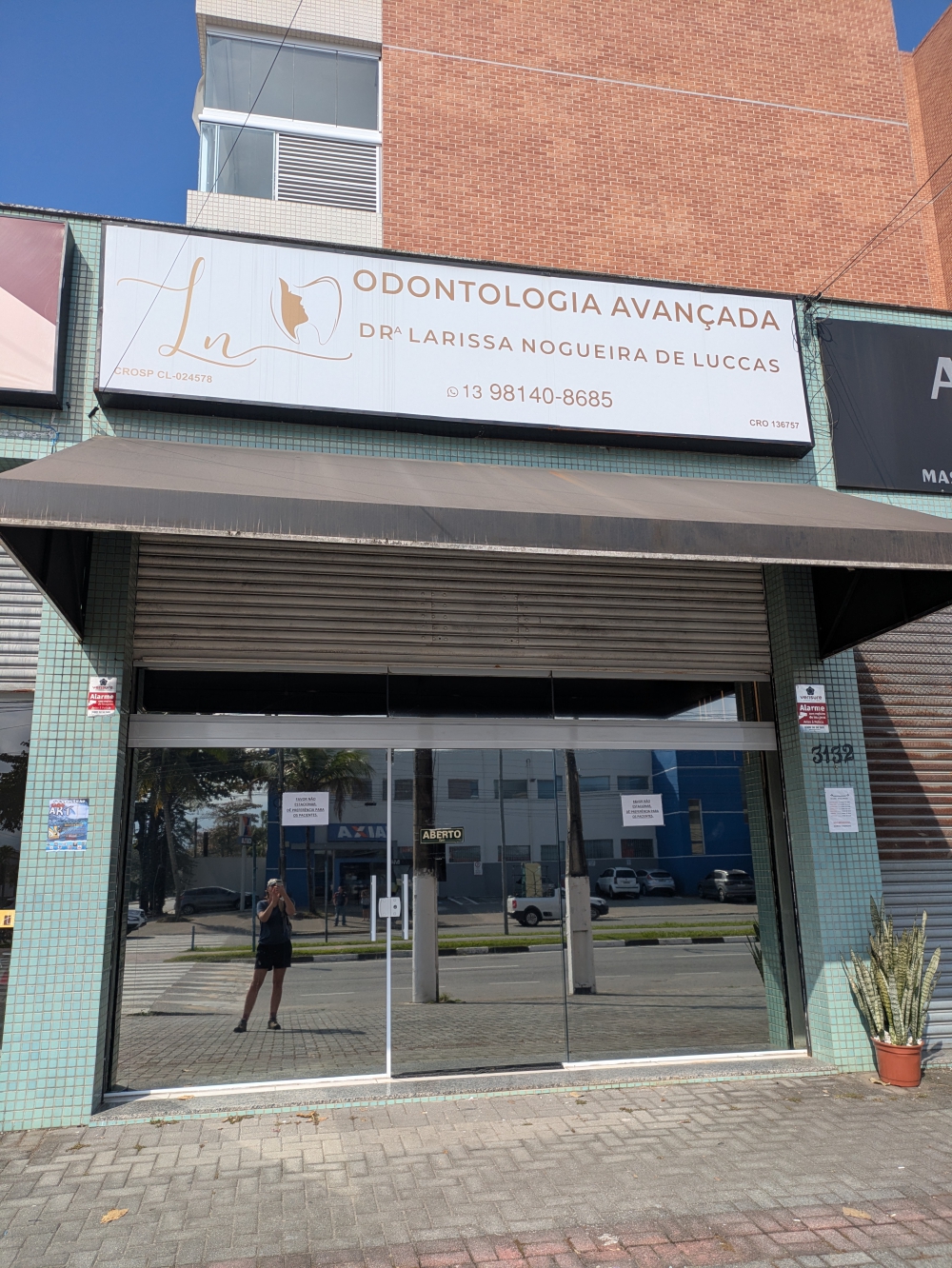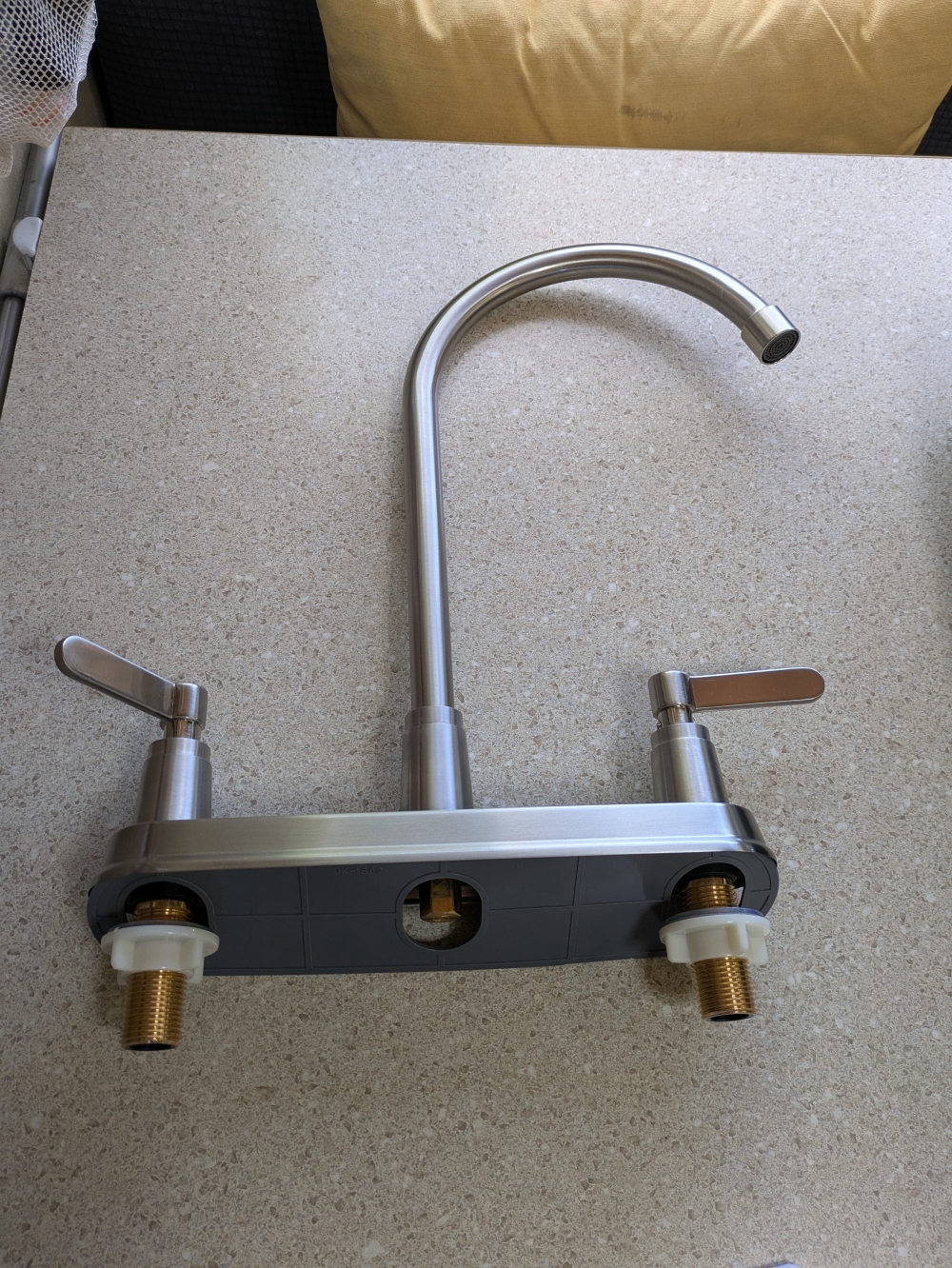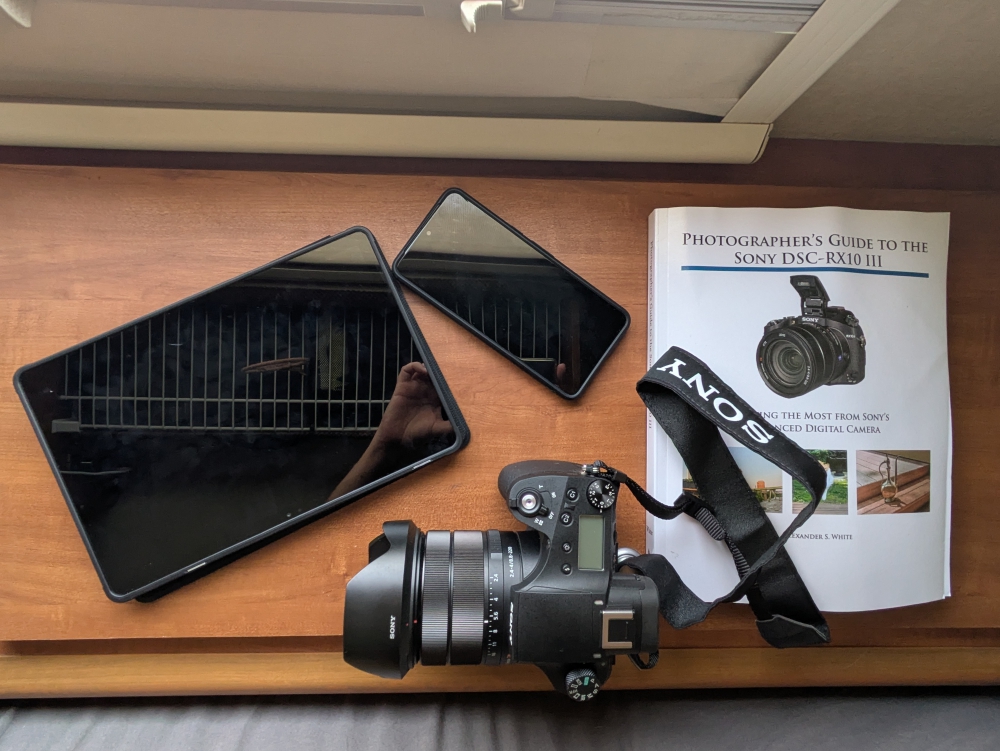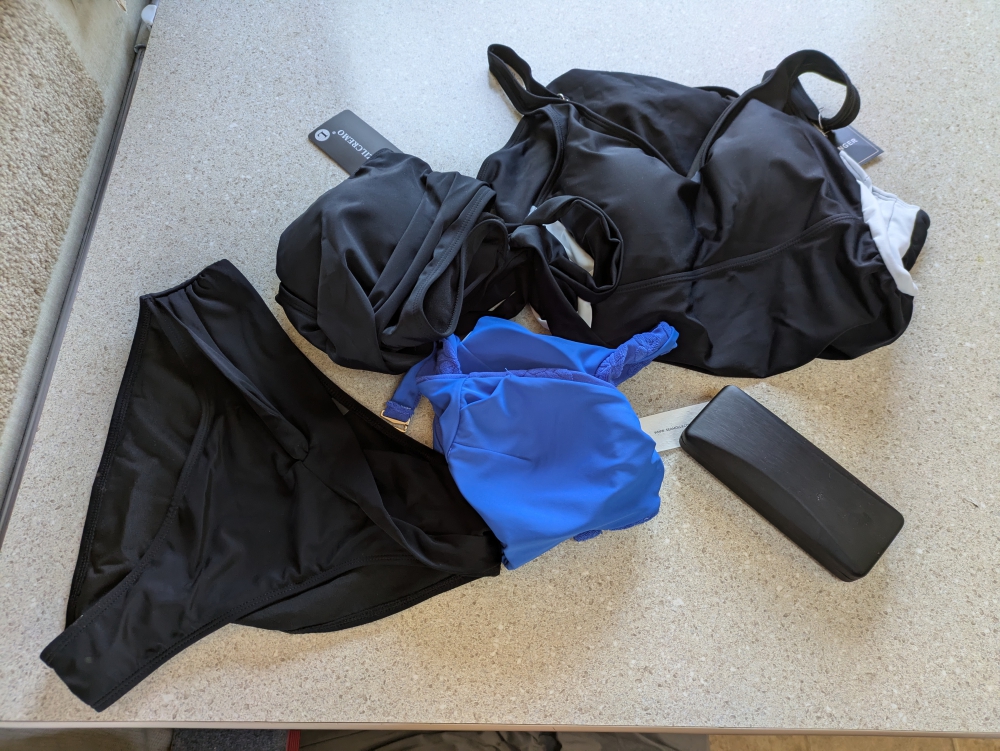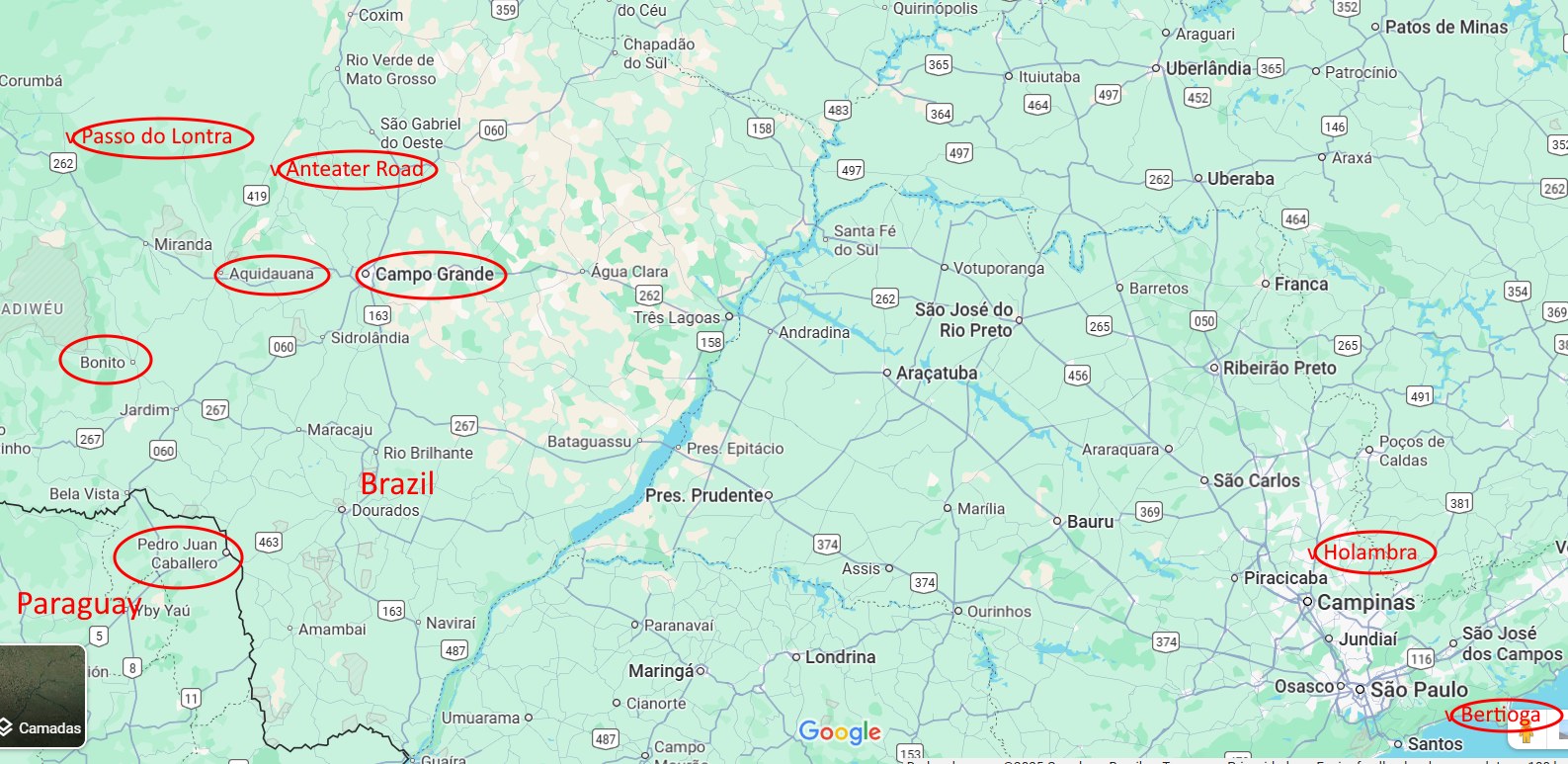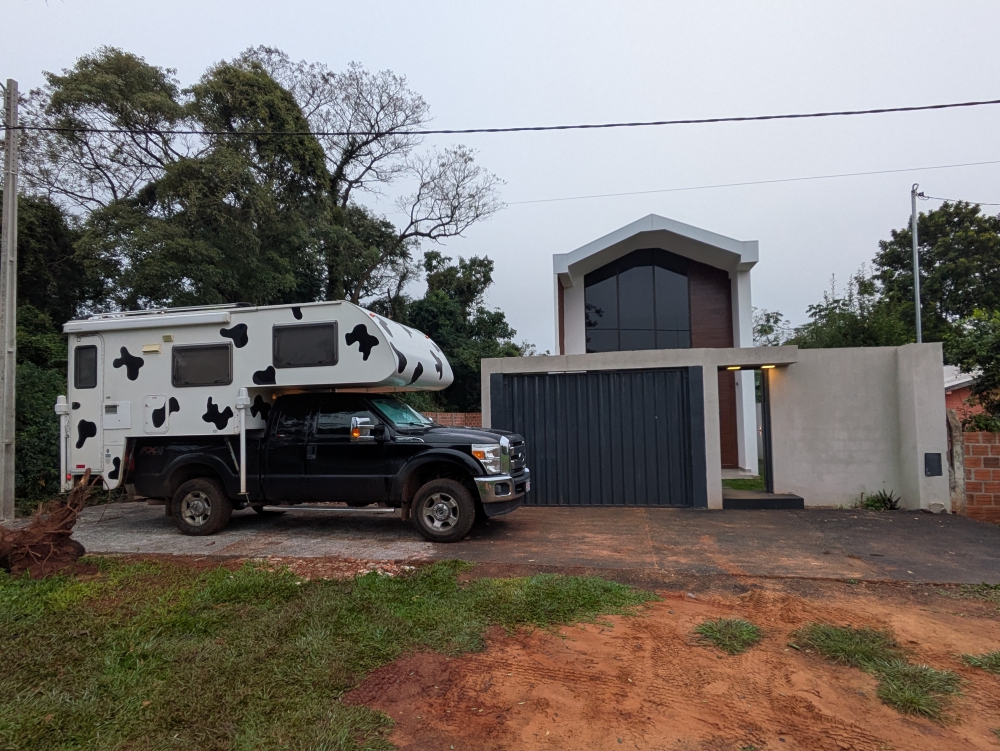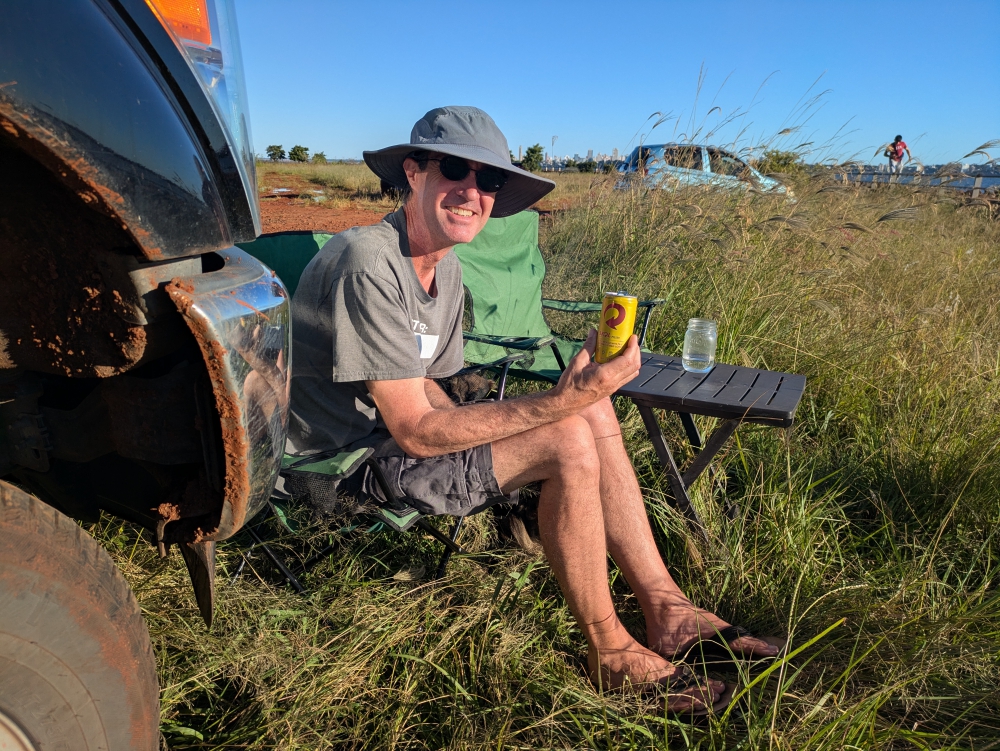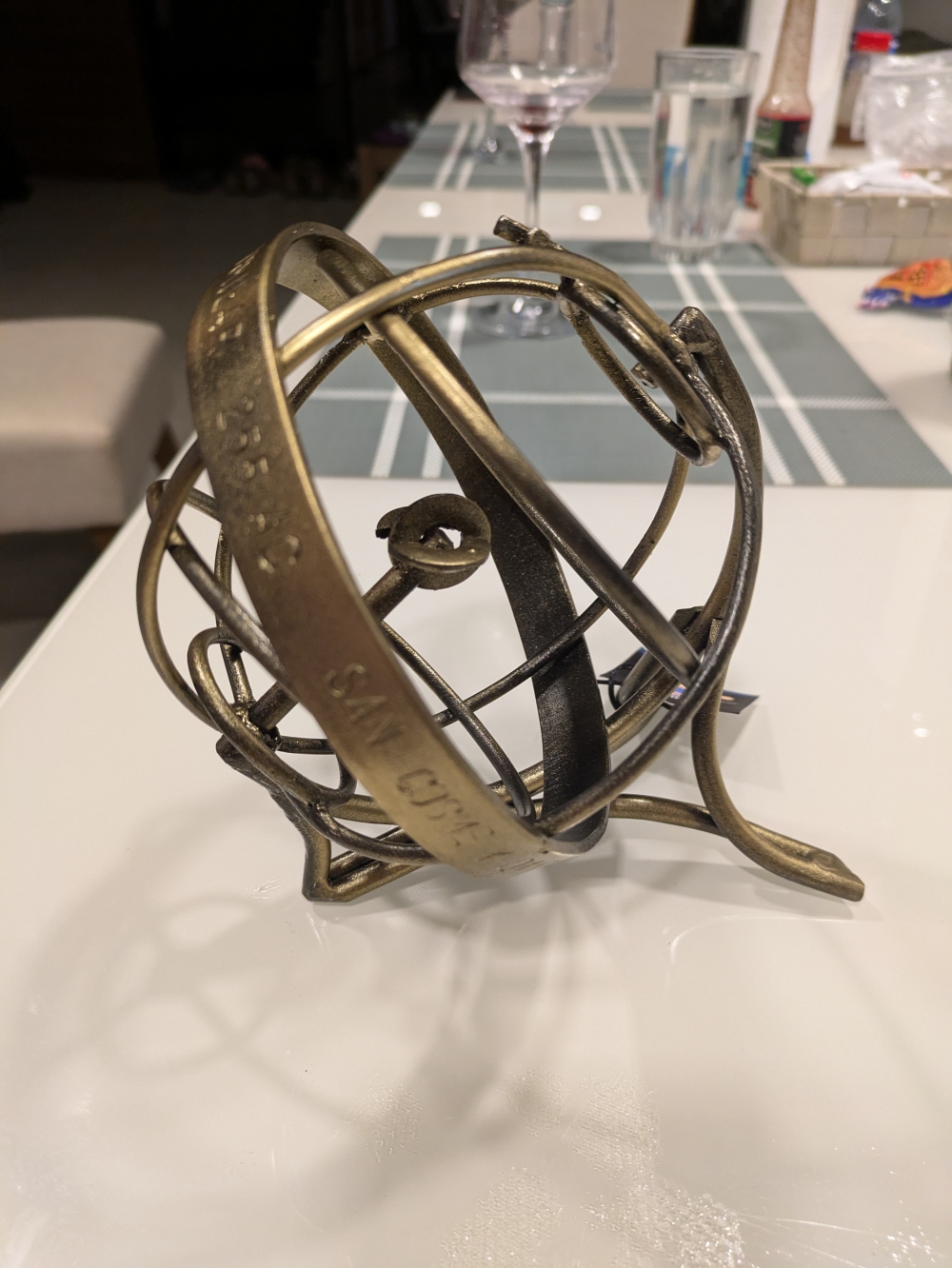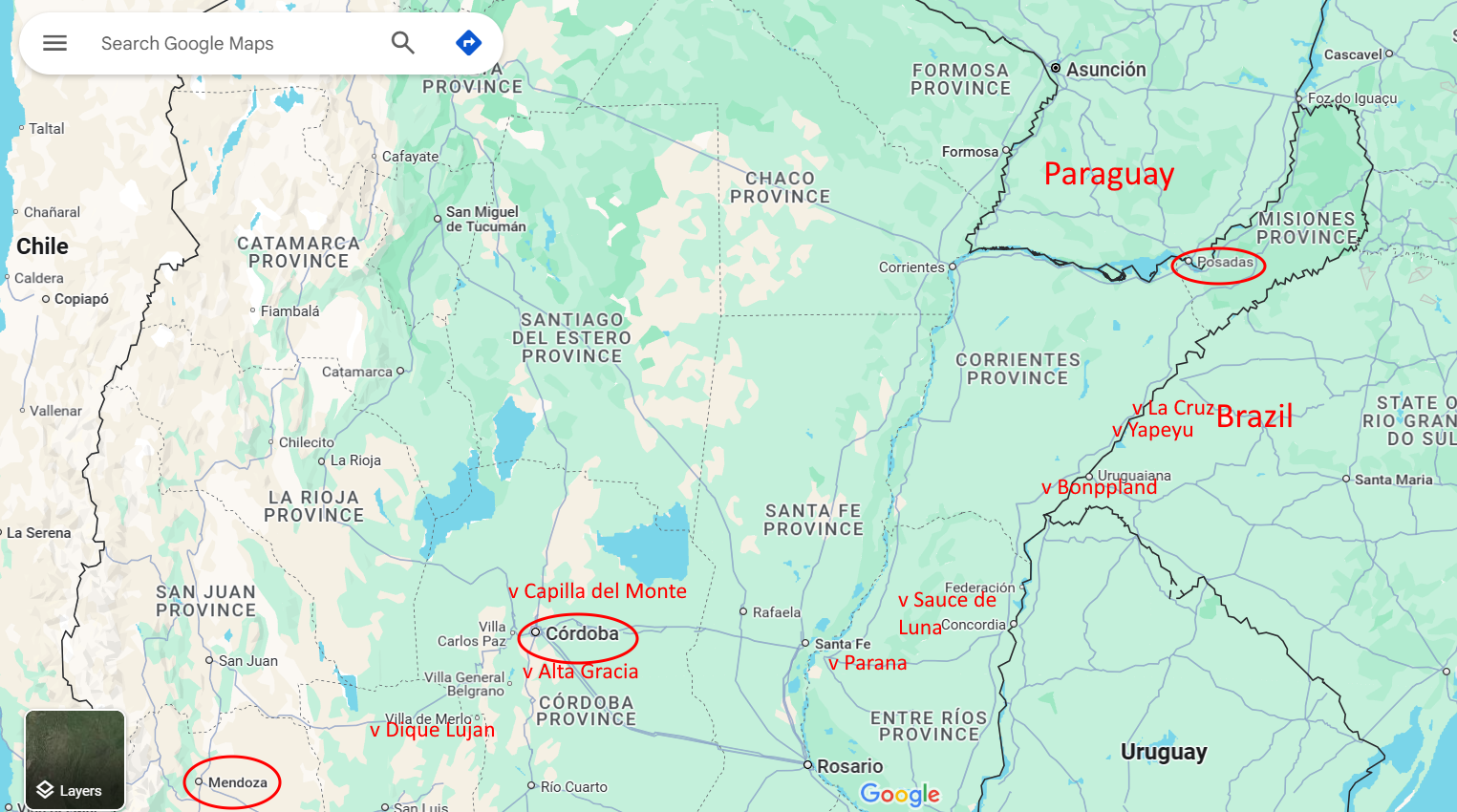
Every month, I post a report of our expenses to show that it is possible to live a comfortable, exciting, and adventurous life without breaking the bank. The less money you spend, the less you need to make. 🙂
This report includes ALL of our expenses, in US$, for two adults and one 60-pound dog (we adopted Maya on June 4th, 2019). Under groceries we incorporate food, produce, and non-alcoholic drinks predominantly bought in supermarkets. Toiletries belong in that category as well. Dining out means eating at a restaurant/event or purchasing take-out food. The health category covers non-prescription medicines and vitamins/supplements; medical contains prescription drugs and doctor’s visits. Because of our income level, Mark and I are eligible for free health care within the state of Massachusetts. For check-ups and extensive care, we return to the US East Coast. Other health issues are resolved locally and out of pocket where needed.
In June, Mark, Maya, and I traveled two weeks in Paraguay and the rest in Brazil in our truck camper, Thirsty Bella. I hopped into Argentina again for a day trip, but didn’t spend anything in that country.
(Hover over or click on photos in galleries to read their captions.)

Focus on the road, always!

Following our tour guide into Passo do Lontra was not a good idea! We didn’t fit, so took a better route after backing up.

Crossing the bridge into Passo do Lontra

Driving the potholed roads in the Pantanal region

Always watch the road!

Approaching Campo Grande, a real city and a big contrast with our nature exploits the previous weeks
Well, our expenses for June were on the higher end of the spectrum once again. This time, the culprits were the long driving distances, ordering camper, truck, and dog items online in the US for Mark to bring back after his visit, a very expensive boat tour to see jaguars in the Pantanal of Brazil (no luck), our annual bank card fee, and Mark ordering a new driver’s license.

So many trucks!

The roads in Brazil are decent, but packed with semi trucks

The Pantanal is huge!

Boat tour on a grey and chilly day in the Southern Pantanal
Here is the detailed breakdown:
Every month, we reach a new record for fuel expenses. For June, this was really insane and surely an all-time high! We spent over $600, just on gasoline, to drive 1,600 miles. Instead of heading directly from eastern Paraguay to the São Paulo area (700 miles), from where Mark would fly to the US, we made a 900-mile detour to explore Bonito and the southern Pantanal area in Brazil. To reach the northern Pantanal with better wildlife viewing possibilities, we would have had to drive another 1,200 miles. Too much and too expensive. Yup, Brazil is big.

Visiting a fuel station in Paraguay

These prices come to about $1 a liter or $4 a gallon

Gas station guard in Paraguay

Last fill up with gas in Paraguay, where the fuel is cheaper than Brazil

Filling up in Bonito before heading into the boonies

Gasoline costs about $1.25 a liter, which is $5 a gallon, in Brazil.

Time to get more fuel in Aquidauana, before driving remote Anteater Road

The prices for fuel are getting a bit better…
On top of that, we bought an extra air filter and grease on Amazon for the truck ($41), and we handed over $21 for toll roads, which turned out to be a very time-consuming hassle. The first toll booths we passed in the middle of Brazil didn’t accept credit cards (unlike every other imaginable store or business). This surprised us, especially since we never took cash out, based on the ease and ubiquity of card use here. So, we had a problem.

One of the dozens of tollbooths we passed

This one was affordable at $1.25 for a car
A quick online search told us that our bank, Chase, doesn’t charge fees for using our debit card internationally, so that was the route to go. Except the toll attendants needed a special machine for this type of card. Long story short, it took a few more stops to figure out the correct procedure with our debit card and, furthermore, the process never went smoothly.

The special reader needed for our international debit card. Apparently, it was new and fancy.

Toll booth receipts for two out of the three driving days
The booth attendant either didn’t believe us, didn’t know if they had the special machine, couldn’t find it, couldn’t operate it, or, in one case, it was broken. Once, a friendly employee actually paid our toll fee and shared her Pix account with us to refund her the money. But, foreigners can’t open a Pix account. Since a laundromat owed us a refund after the machines ruined some of our clothes, I arranged for them to transfer that much bigger amount to the friendly toll booth attendant, who received a 60% tip on top.

Trying this credit card machine with our debit card, in vain

They found the machine and it worked!!

The price is going up: almost $2 per passage now
Needless to say, our toll road experience on awesome paved roads wasn’t as pleasant as it could have been, especially since there was a booth – with all the described hassles – every twenty minutes! The ride from the Pantanal to the coast took three days. On the last one (July 1st), which coincided with a new price increase as well, we avoided toll roads altogether.

In Holambra, we finally took cash out of an ATM machine – we still haven’t used any.

Three weeks into our time in Brazil, we finally learn what cash looks like in this country. 50 reales is about $9.
Our entertainment category was unusually high. The main reason people visit the Pantanal is to go on a boat tour and look for wildlife. On this private tour out of tiny Passo do Lontra, we were allowed to take Maya and motored around for almost ten hours in total. Cost: $190.

Parked for a couple of nights on the family property of our guide

Observing giant otters ashore
And then, there was one of the highlights on this continent: Iguazu/Iguaçu Falls. I’ll create a separate blog post about that soon. We planned to just visit the Brazilian side of this natural world wonder, but then I stumbled upon an unexpected chance to witness the Argentinian side as well, which is very different.

Iguaçu Falls in Brazil

Mark and Liesbet at Iguaçu Falls
The entrance fee in Brazil was about $20 per person. We skipped the elevated parking fee by camping nearby for the same price. In Argentinian National Parks, foreigners usually pay a very steep $45 per person. As a student (with proof), you get in for $7. I should add the transportation cost here as well, since I shared a taxi with four other people in order to cross into Argentina and experience that side. This was $19 per person, including a credit card fee of 5%. Not bad for a day trip of this stature.

Iguazu Falls in Argentina

Hiking trails at Iguazu Falls in Argentina

Liesbet getting wet at Iguazu Falls
We did well with our grocery bill ($202), thanks to affordable Paraguay and cheap produce in Brazil. The annual fee for our Chase credit card was due as well, at $95. The number of points we collect is usually worth that.

Affordable groceries in Paraguay

A really cool and affordable grocery store in Foz de Iguaçu

A decent grocery store in walking distance of our free camping spot in Aquidauana
Mark and I love food and eating out, but we kept this reasonable in June with an expense of $65. This included a buffet in Paraguay, joining new friends for dinner in Bonito to celebrate Wayne’s birthday, one ice cream for me, and a really terrible pizza (with cream cheese!) as a take-out dinner one evening.

Our first Brazilian-style fuel station buffet took place in Paraguay

Lots of vegetable choices

We thought this was a cool service, but didn’t realize there was an extra fee for the extra meat, doubling the cost of the buffet.

Big selection of dishes, starch and meat

The parilla chef

A big and tasty lunch on the road

Dinner out with new friends Jo and Wayne

A tasty chicken burger and roasted vegetables in Bonito

My first caipirinha, Brazil’s national cocktail, in Bonito
In general, Mark and I cook all of our dinners at home, where we stick to a plant-based diet.

A simple stir fry dinner with kimchi on the side

Dinner prep for homemade ramen soup

Our first attempt at cooking ramen from scratch

Falafel dinner

Number of dishes after a normal home-cooked dinner

Making pizza at home with a store-bought crust

This was so easy!

A grilled dinner of eggplant, green pepper, onion, veggie burger, and sweet potato

Another stir-fry dinner

Mini pizzas in our mini oven!
Maya needed another yearly supply of Heartgard medicine ($50), which we ordered online, and because of the weird rules of South American countries that her rabies shot can’t be older than one year (in the US and Europe, a three-year vaccine does the trick for… three years), our pup needed yet another injection. This dog has had more rabies shots in her life than all the loose and stray dogs on this continent combined! Luckily, at under $10, the vaccine was cheap.
Mark needs a new Massachusetts driver’s license soon, so he ordered it online to receive at his mom’s address while he is there. We have to plan around expiration dates of all our documents to deal with this when we are in our home countries. These days, renewed licenses cost a whopping $50! We needed copies of his Brazilian visa as well for the border crossings ($1).

Our paid campground in Foz de Iguaçu

Entrance sign to Cerro Cora National Park

Camped for two nights at the affordable but basic Cerro Cora campground within the park

Prices at Cerro Cora Park
And we splurged on a couple of campgrounds in Brazil – for convenience/ logistical reasons to visit Iguaçu Falls and as an alternative to the pricey excursions in Bonito – and a cheap one in Paraguay for peace.

We wish we could have stayed longer in this campground, but the cost and rainy weather chased us off.

A splurge of a night and day in Rio Formoso Campground

Maya taking a dip in the clear river at the campground
As usual, most of our nights were free, on the edges of towns or in nature.

Home for a couple of weeks

Our camper couldn’t hook up to the 220V electricity grid, but we did manage to connect our fridge and charge our devices with it, which helped with the lack of solar energy.

Camped on a patch of grass heading north in Paraguay

Our first night in Brazil was at a noisy truck stop.

Camped for a couple of nights by the pond of Aquidauana

Our first night of wild camping along Anteater Road

Our second and third night of wild camping along Anteater Road

A free, but noisy, night in the city of Campo Grande

Camped in the Dutch-inspired town of Holambra, before reaching the Brazilian coast

Camped at a truck stop along the highway, heading to the coast

After leaving a noisy truck stop in the dark, we settled for the night in this municipal park. Much better!
Our utilities contained $40 for our monthly Starlink subscription (the other $40 is paid by our business) and $4 to top up our propane tank in Paraguay before crossing into Brazil, where filling US tanks is rumored to be difficult, if not impossible… Free potable water was acquired at campgrounds and fuel stations.

Filling with free water at the gas station of Aquidauana

Getting a bit more water, before the long drive east.

Topping up with propane gas at a good price
We ordered a bunch of caulk online to have in the camper (we ran out), and two more water filters to hook up to our freshwater line at the kitchen sink. This should hold us over until the end of our South American journey, later this year.
One of the highlights in Brazil so far for me is their laundromats. Yup, you read that right. After doing laundry by hand in icy river water for a year, or dropping off “more difficult” pieces at pricey laundromats in the rest of South America, I am delighted to report the ease and efficiency of 24-hour all-automatic laundromats in Brazil!!! And, in Bonito, we managed to wash and dry two big loads for $10 in total. I am a happy camper!

Our laundromat of choice in Bonito – good service, despite the little issue we ran into

Easy payment system

The joy of working. self-serve washers and dryers!
I still did a bunch of laundry by hand as well. When we have unlimited water available, because, why not?

Hand laundry in Paraguay

When I have unlimited fresh water, I can’t resist catching up on laundry.
In reality, we also spent $11 on alcohol, but thanks to a generous follower of this blog, MD, we didn’t have to pay out of pocket for the two bottles of wine we purchased in June. Obrigada!
At $1,559, our total for the month was well over our usual average of $1,300, despite our frugal nature and approach. Maybe it’s time to reconsider our goals and realize every country is getting more expensive than it used to be. Of course, the dropping value of the US dollar is not helping us…
How did we save money last month?
We cut Mark’s hair and cleaned Maya’s teeth ourselves, we took some secondary roads to avoid toll booths, we bought needed gear online in the US (after monitoring their prices for months and waiting for the best moment) instead of in South America, where imported goods are expensive or unavailable, we always make sure to know the price of EVERY item before purchasing, and we were extra careful with our expenses toward the end of the month (no splurges) after realizing we broke the bank yet again.

Paved – but still bouncy – roads in Brazil

Driving through towns and cities means traffic jams again.

Teeth cleaning for Maya

